Palisades Fire in Los Angeles by CAL FIRE_Official, January 2025. Public Domain.
The scale of destruction inflicted by the wildfires that ripped through Los Angeles last month is unprecedented. Sixteen hundred buildings incinerated. Nearly two hundred thousand people evacuated. An estimated economic loss of $250 billion. Typically, in the midst of a novel catastrophe like this, part of our panic stems from an inability to articulate what we are witnessing. Take COVID: until we all learned specialized vocabulary like “asymptomatic” and “incubation period,” simply comprehending the shape of the pandemic felt impossible, to say nothing of organizing a collective response. Now, however, confronted with images of neighborhoods erupting in flames and city blocks reduced to rubble, our anxiety is magnified precisely because the language to describe what we see seems so obvious: since the Palisades Fire ignited on January 7th, LA has resembled a warzone. And in America, we have long understood that wars do not happen here.
But even as Angelenos pick through scorched debris and try to make sense of the trauma they’ve endured, preparations are already underway for the next battle in what has become a decades-long siege. Because summer is coming, and with it, the promise of more drought, more windstorms, more out-of-control wildfires. Right now, all across the western United States, firefighting bases are gearing up to train their newest batch of recruits. If they’re smart, those recruits are getting ready, too.
*
On March 28th, 2021, I drove to Redding, California for the first day of smokejumper rookie training. Smokejumpers parachute into mountains to suppress remote wildfires, and the six-week entry program is notoriously difficult: a typical rookie class will see an attrition rate of about forty percent. There are nine smokejumper bases in the United States, and each has devised its own methods for testing applicants. Missoula is famous for forcing candidates to dig fire-line for twenty-four hours straight. Grangeville rookies are welcomed with the Prairie Run, an interminable marathon across the Idahoan steppe, punctuated with rounds of endless pushups and sit-ups. In Redding, we spent so much time hiking through poison oak that by the end of training, it looked as though I had contracted a bad case of leprosy. Regardless of each base’s particular initiation rites, however, smokejumper rookie candidates can expect certain universals: a vertiginous learning curve, the omnipresent threat of failure, and an impatient, aggressive cadre of trainers. After getting yelled at yet again for some minor mistake, a rookie candidate inevitably asks himself: what is the point of all this hostility?
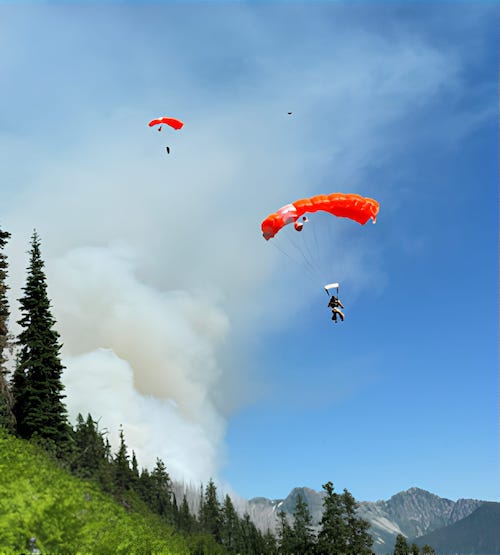 Smokejumpers prepare to land on a steep hillside
Smokejumpers prepare to land on a steep hillside
It’s a fair question. There’s no subsection in the Smokejumper Training Guide that states: Trainers must treat all rookies with contempt, constantly question their commitment, and punish every error with calisthenics. Yet it is taken as a given that rookie training will be brutal: mentally, physically, and emotionally. Why?
The standard reasoning is this: first, smokejumping is an extremely difficult job, and candidates must prove that they can shoulder the workload required to extinguish a wildfire raging in the middle of August. Second, flying a parachute into rugged, mountainous terrain is stressful, and the trainers’ severity pressure-tests each candidate’s stress response. If you can recite your jump-count fourteen miles into a run, while someone screams in your face, then you will always be able to recite your jump-count. Or so the theory goes.
It becomes clear, however, which candidates are objectively fit enough for the job after the first few days of training. Beyond that, workouts test a candidate’s mental fortitude. But if the exclusive aim of rookie training is to teach neophytes how to fly a parachute, then trainers constantly berating them is not a self-evidently optimal training technique. As Dr. Judy Willis writes in her article “The Neuroscience Behind Stress and Learning”: “The neuro-scientific research about learning has revealed the negative impact of stress . . . and the qualitative improvement of the brain circuitry involved in memory and executive function that accompanies positive motivation and engagement.” If the sole value of smokejumper rookie training is to produce as many competent parachutists as possible, it might be worth reevaluating the tradition of trainers acting like drill sergeants.
However, that is not the sole value of the training. Particularly in our strange, uncertain age, with its attendant crises of war, alienation, and environmental devastation, smokejumper rookie training serves as a singular model for promoting human flourishing in the twenty-first century. It offers a glimpse of how we might thrive, rather than simply survive.
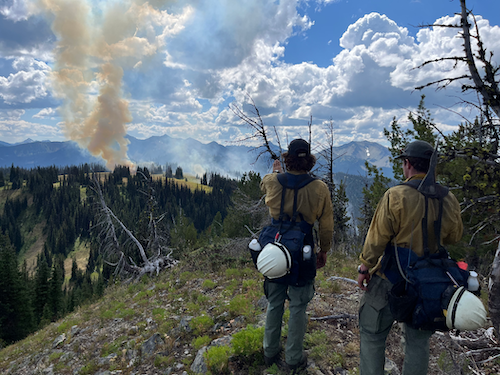 Two smokejumpers hike towards a fire in northern Washington state
Two smokejumpers hike towards a fire in northern Washington state
Humans are obsessed with the narrative of the battlefield as the birthplace of heroes. Ancient stories like The Iliad, The Bhagavad Gita, and The Epic of Gilgamesh all tell of great warriors winning glory after slaying their people’s enemies. Movies like American Sniper, Inglorious Basterds, and Top Gun: Maverick dominate at the box office. In cultures around the world, young men are conditioned to equate aggression with masculinity, and many boys dream of the opportunity to demonstrate their mettle by singlehandedly turning the tide against some marauding foe.
But if battles ever depended on individual courage, those days are gone. Now, conflicts are determined by the sheer weight of machinery. In his book War, Sebastian Junger writes: “The idea that there are rules in warfare and that combatants kill each other according to basic concepts of fairness probably ended for good with the machine gun.” Inventions like the Tomahawk missile and the Reaper drone have drained warfare of whatever melodrama it might have contained back in the days of horse-mounted cavalry. Today, most military exploits can be distilled to Junger’s description of U.S. infantrymen launching $80,000 Javelin rounds at Afghan soldiers a half mile away: artillery “fired by a guy who doesn’t make that in a year at a guy who doesn’t make that in a lifetime.” Yet despite the mechanized brutality of modern combat, many Americans still view committing violence on behalf of the wealthiest state in the world, against some of the poorest, as the highest manifestation of male bravery.
Given the relentless advance of weapons technology, any world where humans continue to fight en masse makes our collective suicide overwhelmingly likely. But for all its horror, warfare is often addictive. The bonds forged in battle can make civilian relationships seem like cheap facsimiles. Having an enemy shoot at your friends infuses life with a prima facie sense of purpose: don’t let them get shot. Junger writes: “Perfectly sane, good men have been drawn back to combat over and over again, and anyone interested in the idea of world peace would do well to know what they’re looking for. Not killing . . . but the other side of the equation: protecting. The defense of the tribe is an insanely compelling idea, and once you’ve been exposed to it, there’s almost nothing you’d rather do.”
Revering those who “defend the tribe” is a social universal, and rightly so. We should celebrate those who protect others. But unless we graduate beyond our current, impoverished notions of “defend” and “tribe,” the human experiment will end in agony. To relinquish all that gore and adrenaline and fraternity, we must replace war with a new tradition. Cristina Rivera Garza writes in her book Grieving: Dispatches from a Wounded Country: “Only when societies can invent something more exciting, riskier, more adventurous, more revolutionary, will we be able to say, truthfully, that we are against war.”
This, then, is the great challenge of our age: to create a narrative more thrilling than bloodshed. America’s alarming rates of anxiety, opioid abuse, and extremism suggest we want a better story than the pursuit of incremental raises. Q-Anon adherents trampling Capitol police officers to death and then being hailed as heroes, crowds cheering as politicians promise to deport the immigrants “invading” our borders: recent years have proven that, bereft of some purpose, people will invent their own dramas of righteous struggle, no matter how preposterous.
Yet even as we manufacture increasingly asinine permutations of us-versus-them, our real enemies are committing atrocities. These enemies kill the innocent, then leave their bodies in plain sight: corpses floating through North Carolina floodwaters, toddlers crushed by hurricanes in Puerto Rico, grandparents burned alive in Los Angeles. The CO₂ cooking our oceans, the methane prolonging our droughts, the chlorofluorocarbons chewing through our atmosphere: while we contemplate waging civil war over who can use which bathroom, these molecules are planning genocides.
Scientific consensus predicts an average global warming of between two and three degrees Celsius by 2100. David Wallace-Wells writes in The Uninhabitable Earth that, at two degrees, “cities now home to millions, across India and the Middle East, would become so hot that stepping outside in summer would be a lethal risk, and wildfires already terrifying anyone living in the American West would burn at least four times as much land.” Three degrees means widespread drought and food insecurity, and in the United States, living with “sixteen times as much devastation from fire as we are today.” The coming decades are going to be full of natural catastrophes the likes of which we’ve never seen. Our current emissions course guarantees that life everywhere will get much, much harder.
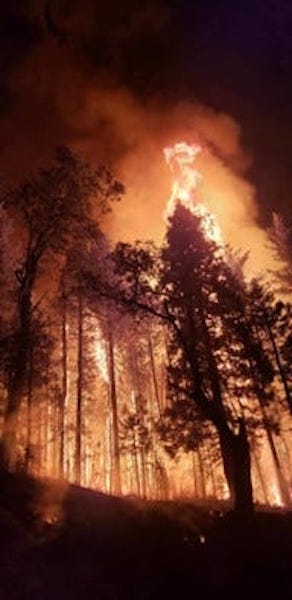 Tree torching in northern California
Tree torching in northern California
Smokejumper rookie training is full of tasks that, at first, seem impossible. Whether it’s doing push-ups for an hour straight, humping one hundred pounds of gear through the mountains, or parachuting onto a spine ridge surrounded by cliffs, every day, rookies must learn to ignore their initial sense of hopelessness. They must break assignments down into their component parts and focus only on the task at hand. They must continue to perform, deep into exhaustion.
In America, most apprenticeships that test an applicant’s intellectual and physical resilience involve violence. If someone wants to discover the boundaries of their mental and corporeal capabilities and is willing to kill on behalf of the government, options abound: Delta Force, Navy SEALs, the LAPD Academy. However, if a young person wants to explore the depths of their willpower, but does not want to shoot other human beings, their choices are few and far between. This is a problem.
It’s a problem because confrontation with one’s bodily limits fosters a mental fortitude that nothing else can. As temperatures around the world climb, we should encourage traditions that promote strength, because our species’ continued success is far from guaranteed. Cultures everywhere developed rites of passage to test their young people’s physical resolve not just because life once demanded a higher level of aerobic fitness, but because physical resolve fosters a general sense of competence. Mircea Eliade writes in his book Rites and Symbols of Initiation: “. . . one of the characteristics of the modern world is the disappearance of any meaningful rites of initiation. Of primary importance in traditional societies, in the modern Western world significant initiation is practically nonexistent.”
From Masai circumcision ceremonies to Aboriginal boras to the Spartan agoge, these rituals taught young people their own tenacity, and they all shared certain characteristics: prolonged discomfort, dramatized disdain from the society’s elder members, and finally, acceptance into the tribe. The self-esteem a smokejumper feels at graduation is commensurate with the suffering he has endured. All the runs, all the push-ups, and all the antagonism combine to deepen the sense of achievement.
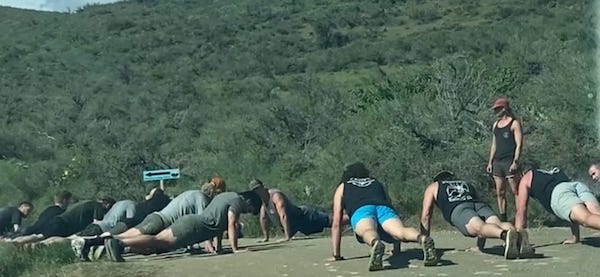 Smokejumper rookie candidates do push-ups
Smokejumper rookie candidates do push-ups
But the trainers’ harshness serves a deeper purpose than simply augmenting a rookie’s pride or testing how each candidate handles fatigue. It creates a sense of veneration, as the training cadre comes to represent the smokejumper program writ large. The candidates, as they try to prove themselves worthy of admittance, develop a deferential loyalty to the broader organization. Those purgatorial six weeks reinforce the idea that membership is a privilege, not a right.
Simultaneously, candidates feel respected by the effort being demanded of them. Although it seems anathema in modern culture, being forced to climb enormous trees after a long run, or ford chest-deep rivers with a heavy pack on your back, or dig fire-line for twenty-four hours straight, is a form of recognition. The underlying message is: You are tougher than you think. The work ethic that defines the smokejumper program is so rare precisely for this reason: people expend the greatest effort when they respect, and feel respected by, the organization of which they form a part. If a community demands nothing of its participants, it will receive nothing in return.
Our national conversation is obsessed with what America owes its people, while any discussion about what a citizen owes her nation has all but evaporated. Rather than appreciate the institutions that allow such an improbable level of comfort, many Americans compare our country to some imagined utopia and deem it irredeemably corrupt. Rather than try to improve on the accomplishments of our ancestors, we focus only on their failings. We have been taught to look for ways we have been wronged, rather than understand ourselves as the sort of people who can succeed in trying circumstances.
At a moment when the world is feeling the first paroxysms of the greatest crisis our species has ever faced, it is a bitter historical irony that we have stripped away the customs that once encouraged resilience in our youth. California wildfires, Caribbean hurricanes, Southwestern droughts: recent natural disasters are nothing compared to the chaos 2050 has in store. It’s difficult to overstate the damage global warming will inflict, and the human strength that will be required to mitigate that damage. Yet a philosophy of what psychologist Jonathan Haidt calls “vindictive protectiveness” has inculcated an idea in Millennials: “life is dangerous, but adults will do everything in their power to protect you from harm.”
Now that Millennials are the adults, we appear cowed by the dysfunction facing us (perhaps this is why we keep electing members of the Silent Generation to power: better to live under a gerontocracy than assume responsibility). Take climate change: Millennials have mastered the art of performative ecological conscientiousness, but in the realpolitik of generating meaningful change, we have proven incompetent. We have been told that the difficulties we face are someone else’s fault and someone else’s responsibility, so we post a brief screed on social media and then go about our business.
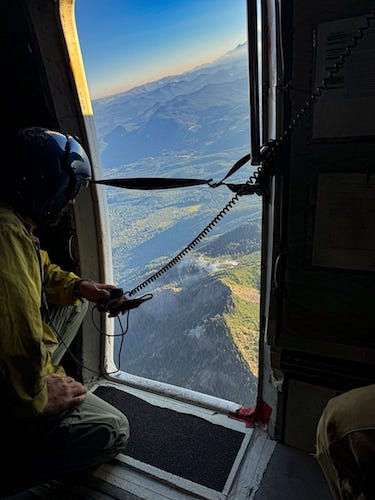 A smokejumper spotter sizes up a wildfire on a ridge
A smokejumper spotter sizes up a wildfire on a ridge
Smokejumper rookie training is defined by a sense of urgency. Candidates sprint everywhere, are terrified of being last, and are constantly told to, “Hurry up!” My cohort and I were regularly admonished for dithering in the face of apparently insurmountable obstacles. We were instructed to act decisively, even when a situation seemed hopeless, and chided for clinging to strategies that were no longer viable. If the training philosophy had to be summed up into a few words, it would be: “Act, then react.”
This attitude, of responding energetically when success is uncertain, then reevaluating as the situation evolves, describes proper firefighting. A tree torches and throws embers a quarter-mile upslope, a burning log rolls to the valley bottom and ignites a spot fire, the wind increases by ten miles per hour: we don’t give up when a wildfire grows more complex. We come up with a new plan. This posture, of vigorous adaptability, must be exported into the broader population.
We are out of time regarding climate change. To avoid vast, grotesque, unnecessary suffering, we need to take the kind of aggressive action that characterized America’s WWII response. Saul Griffith, in his book Electrify!, writes that “the industrial mobilization required to hit the climate targets that our children deserve will require an effort similar to World War II’s ‘Arsenal of Democracy’ in size, speed, and scope.” Griffith discusses how unfeasible this “war-time mobilization” appears in our current culture. To take one example, switching to a solar-based power grid would require fifteen million acres of solar panels: “more than two-thirds of all available roofs, roads, and parking spaces” in America.
But if we want a future with any biodiversity, fresh water, or clean air, we must snap out of our apathetic, aggrieved pessimism, and understand ourselves as a people who can grapple with genuine adversity. Some measure of failure is guaranteed in the climate crisis: the earth has already warmed 1.1° C since 1880. Half of that increase occurred over the last four decades.
However, this shouldn’t be paralyzing. It should be inspiring. Humans evolved to solve problems, and solving problems is where we find meaning. And for the first time in history, all of us are on the same side: global warming is catastrophic for everyone. Disease, water shortages, climate refugees: within all the calamities certain to unfold during the coming years, there will be manifold opportunities to demonstrate valiance, strength, and selflessness. Responding to climate change offers the opportunity to defend our global tribe, without having to maim another.
That’s why smokejumper rookie training is so important. Yes, it trains a specific type of firefighter, but it is also one of the few programs cultivating the proper attitude for twenty-first-century citizens. Wallace-Wells writes: “. . . the effect of wildfires on emissions is among the most feared climate feedback loops—that the world’s forests, which have typically been carbon sinks, would become carbon sources, unleashing all that stored gas.” Around the world, “deforestation accounts for about twelve percent of carbon emissions, and forest fires produce as much as twenty-five percent.” As we look at the photos of the destruction in Los Angeles, we should all feel the buzz of a wartime recruit. We should feel the camaraderie of a people under siege.
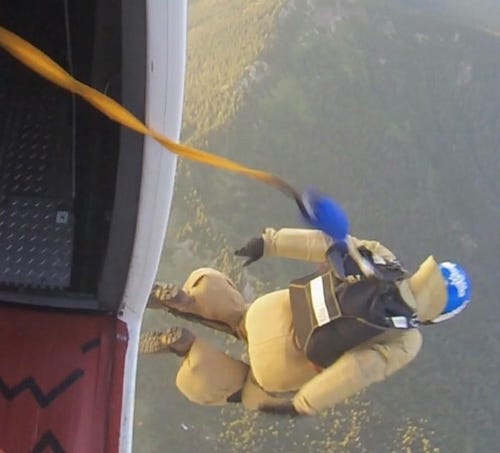 Smokejumper launches from a plane to respond to a fire near Mount Rainier
Smokejumper launches from a plane to respond to a fire near Mount Rainier
Smokejumpers tend to recall two things about their rookie experience. First is the excitement of those six weeks: not just the jumps, but the challenge of making it from one day to the next. The condescending philosophy that people are weak and must be protected has become pervasive over the last few decades. To be in an environment where instructors brook no excuse and accept only your best offers an increasingly rare thrill.
Second is a sense of awe at the progress crammed into a month and a half. For a novice to learn, in six weeks, how to land a parachute in a half-acre meadow surrounded by tall trees is a remarkable feat. Perhaps more remarkable still is how many people manage it. Yes, half the candidates wash out. But half the candidates don’t. No one in my cohort was a freak athlete or a savant. We were all normal people, trying our absolute hardest. The resolve demonstrated by every rookie class, the bravery required to jump out of an airplane for the first time, hints at a vast potential languishing within our population.
The climate crisis, instead of crippling us, could be what unleashes this potential. Smokejumper rookie training is a rite of passage for this new age, an example of how society should prepare for the carbon enemy at our doorstep. We are not a fragile species, despite what we have been told. We are innovators, protectors, warriors. And we are under attack.
How should we be training?
Conor Hogan
Conor Hogan is an MFA candidate at the University of Houston and an assistant fiction editor for Gulf Coast: A Journal of Literature and Fine Arts. He is a recipient of the Inprint C. Glenn Cambor fellowship, the National Smokejumper Association scholarship, and two Fulbright fellowships. His work has been a finalist for the Montana Prize in Short Fiction, and appears in The San Francisco Chronicle, Dreamers Magazine, and The Hamilton Stone Review, among other places. He currently splits time between Houston, Texas, and Winthrop, Washington, where he works as a smokejumper for the US Forest Service.






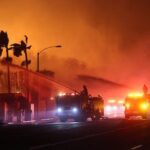
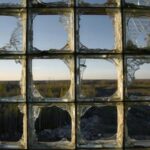
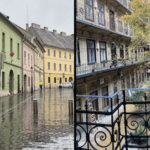
Wow. Such an incisive, trenchant perspective on the current climate crisis and our ability as a species to face it with courage and energy. Thank you, Conor.
Conor, your exceptional essay is an outstanding insight into our perilous climate crisis and the obligation of humanity to take decisive action. We are humbled by your first hand, heroic experience and grateful for your personal sacrifices to save lives and the life of our planet.